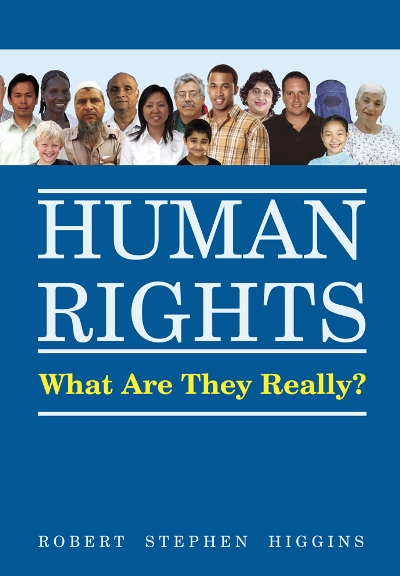
The book challenges the validity of some rights that were invented by idealists intent on designing society. Therefore, a chapter exposes false notions of rights. The book's main purpose, though, is to present a complete theory of human rights resulting from an objective analysis of what rights every person naturally has. It applies the theory to ten current issues ranging from same abortion to world poverty.
"...Human Rights, What Are They Really? is a wide-ranging discussion that should be essential, required reading for American history, social and political studies, and debate courses from the high school level on up." D.Donovan, Senior Reviewer, Midwest Book Reviews
Genre: PHILOSOPHY / Ethics & Moral PhilosophyHuman rights, What Are They Really? was published in Canada in 2008 and in USA, with Amazon, in 2020 February (both ebook and paperback). It has also been published in Spanish, Italian, Portuguese(imminent) and Croatian. Sales are best in Spanish and Croatian but Portuguese is very new.
For a person to have security and liberty in his/her life there must be rights that apply to the individual. As well, the other members of the community and the government must respect these rights. Without commonly accepted rights and the means to enforce them there is no system of defence against the appetites of the strong, the will of the majority or the overreaching ambitions of leaders. Some groups of people would be especially vulnerable: women in some countries, members of visible, ethnic or religious minorities, homosexuals, and the powerless. The defence by rights depends on the identification of true basic rights. Mixing in a false right results in limited energy and resources being wastefully employed and, more importantly, usually results in real rights being trampled. This book presents a theory of true fundamental rights and identifies false rights that are being harmfully implemented. It argues that identifying true rights involves more than one’s moral or social inclinations; it involves reason and analysis if the crucial requirements of permanent truth and universality are to be satisfied.
The first issue is, “What is a right?” A right is a mandatory reason for supplying something to the right-holder, with this reason being based on an unassailable principle or definite contract. The right addresses someone who is capable of supplying the “something”. Therefore, there are three necessary elements of a right:
A right-holder (i.e., the subject of the right)
Person/people who are addressed by the right
Some specific obligation placed on the person/people addressed with respect to the right-holder
If any of the elements are missing in the statement of a right, then the right is invalid or empty of force. For example, the claim that a person has a right to work is empty because it is entirely speculative as to whom the right addresses and what their obligation is.
| Language | Status |
|---|---|
|
French
|
Already translated.
Translated by TETKEU Leonard Necker
|
|
Italian
|
Already translated.
Translated by Giulio Chinappi
|
|
Portuguese
|
Already translated.
Translated by Erica Ceotto
|
|
Spanish
|
Already translated.
|